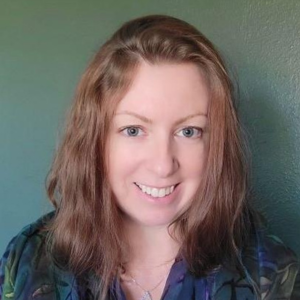Medicare’s parent agency has expanded a program that seeks to improve the quality and efficiency of home health care services, and Judith Ouellet, PhD, MPH, a University of Colorado Department of Medicine researcher, is helping in the effort to assess home health quality under the program.
Ouellet is a senior instructor in the Division of Health Care Policy and Research, a division made up of interdisciplinary researchers who design and conduct health outcomes research, economic analysis, and evaluate efforts to improve the quality of health care services.
She is the division’s lead on a project to assess the implementation of the Home Health Value-Based Purchasing Model program, or HHVBP, now being rolled out nationwide by the U.S. Centers for Medicare & Medicaid (CMS), the agency that runs Medicare.
Just as a primary care doctor regularly uses a stethoscope and a surgeon employs a scalpel, Ouellet’s medical tool of choice is data. It’s the tool she’s using to help protect homebound patients.
‘Inadequate, uncoordinated care’
Home health care encompasses a variety of services provided for those with an illness or injury outside of a hospital or skilled nursing facility. Medicare generally pays for certain home health care services – such as medically necessary part-time or intermittent skilled nursing care, physical and occupational therapy, and medical social services – if a doctor certifies a patient needs the care and if a patient has difficulty leaving home for care.
The home care usually is provided by a Medicare certified home health agency. There are more than 11,000 home health agencies nationwide – 84% of them operating for profit – serving roughly 3 million patients in a typical year, the National Center for Health Statistics says.
→ Research Shows Impact of Caregiving on Parents’ Employment, Health
When it works the way it should, home health care can be less expensive, more convenient, and as effective as care provided at a hospital or skilled nursing facility. But a CMS report on home care before the start of the HHVBP model said that “Medicare beneficiaries who qualify for home health care often receive inadequate, uncoordinated care for their chronic health conditions, resulting in more visits to the emergency room, more admissions to the hospital, or more placements in a skilled nursing facility.”
Part of the problem is that home health agencies traditionally have been reimbursed through a “fee-for-service” (or “volume-based”) model, based on the volume of services performed.
Rewarded for quality
To help address those problems, CMS in 2016 introduced a pilot version of the HHVBP model in nine states, not including Colorado. The original HHVBP model introduced a “value-based” incentive system designed to reward home health care agencies for the quality of care they provide, not just the quantity of services. The incentives come in the form of payment adjustments, up or down, to the providers’ service fees.
The original, nine-state version of HHVBP resulted in an average 4.6% improvement in home health agencies’ performance scores on a set of care-quality measurements, CMS says, and saved Medicare $141 million per year. It also led to fewer unplanned hospitalizations and fewer trips to skilled nursing facilities.
Since January 2022, CMS has been gradually transitioning to an expanded HHVBP program in all 50 states, starting with a training program for home health agencies. In 2023, CMS began gathering performance data on a set of quality measures, that will be used to adjust providers’ Medicare reimbursements starting in 2025 based on how well the home health agencies perform.
“The value-based purchasing model rewards the agencies for improvement compared to their own baseline, and for achievement compared to other agencies within the same volume-based cohort,” Ouellet says.
Self-care and mobility
To evaluate the expanded HHVBP, Ouellet works under a five-year, $38 million contract with CMS that began last December. Abt Global, a consulting and research firm, is the prime contractor. It’s the latest in a series of contracts to support implementation of HHVBP that Ouellet has been part of since 2016.
“I really like finding patterns in data,” she says. “That’s why I enjoy working with home health data. Putting all the pieces together with such large data sets is something that fascinates me.”
→ How a CU Biostatistician is Helping Improve Palliative Care Research
The contract calls for an evaluation of 12 care quality measures specified by CMS in evaluating the program’s success. Under a prior contract — led by Eugene Nuccio, PhD, a retired Division of Health Care Policy and Research faculty member — the team developed two of the quality measures: One assessing changes in patients’ self-care (including grooming, dressing, eating, and bathing) and the other evaluating mobility (including walking, getting in and out of bed, and ability to access the toilet).
The 10 remaining quality measures currently used include other Outcomes and Assessment Information Set (OASIS)-based measures; “claims-based” measures, such as the rate of acute care hospitalizations; and Home Health Care CAHPS Survey (HHCAHPS)-based measures, drawn from a survey asking patients about their experiences with a home health agency.
'It has impact'
Data from those measures are used to develop informative quarterly performance reports and annual reports that provide detail on how each home health agency’s performance will translate to a payment adjustment in the corresponding payment year.
Ouellet also provides technical assistance, which includes collaborating on the development of HHVBP model resources focused on understanding data, risk adjustment, and performance reports.
“We also monitor trends over time,” she says. “We may make recommendations based on what we're seeing with home health patients, and if CMS is interested in making changes, we may be asked to do focused impact analyses so that they may understand the impact the change might have.”
Ouellet says the contract work she’s doing is different from her suicide-bereavement research. “It’s not heavy publication, but it has impact. It’s looking at care that’s happening now and providing information to help improve it.”




